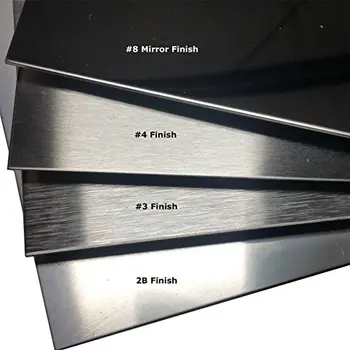A240 a203gr.a metal 15pc knife block
A240 a203gr.a steel 3rd quarter 2018
The reason we promote utilizing 16 gauge metal for your sinks versus 18 gauge is 16 is extra inflexible. You will hear the distinction between these two thicknesses when you drop a knife or other utensil in the sink. The thinner steel might be louder and better pitched, whereas the sixteen gauge shall be a lower pitch and substantially quieter when struck. It’s complicated to many people that steel cable, rod and sheet stock are measured using a system that seems counter-intuitive. As conventional measurements increase in quantity, so does weight and thickness, proper?
The chart under can be used to determine the equivalent sheet thickness, in inches or millimeters, for a gauge quantity from the selected gauge measurement normal. The weight per unit area of the sheet can be seen in pounds per sq. foot and kilograms per square meter. When speaking about the “mil” or “guage” of vinyl pool liners, you should first get a good understanding of what these phrases really mean. The most typical term for vinyl, “mil” (to not be confused with millimeter) is a unit of measurement equal to one thousandth of an inch. Therefore, a 20 mil liner thickness is equal to 20 thousandths of an inch.
The time period “gauge” (to not be confused with mil), is a little more of a transferring goal. See, a number of industries measure gadgets such as wire, shotgun barrels, sheet steel, photographic movie and hypodermic needles by their gauge. This could be very complicated as in a case like shotgun barrels where the smaller the gauge, the larger the barrel.

A240 a203gr.a steel third rack
Gauge (or gage) sizes are numbers that indicate the thickness of a chunk of sheet metallic, with a higher quantity referring to a thinner sheet. The equivalent thicknesses differ for each ASTM A203GR.A Nickel-Alloy steel plate gauge measurement normal, which were developed based mostly on the weight of the sheet for a given materials.
- The Manufacturers’ Standard Gage offers the thicknesses for standard steel, galvanized steel, and stainless-steel.
- Gauge (or gage) sizes are numbers that indicate the thickness of a chunk of sheet steel, with the next number referring to a thinner sheet.
- In the UK, the Birmingham Gage (BG) is used for a wide range of metals and shouldn’t be confused with the Birmingham Wire Gage (BWG), which is used for wires.
- The equal thicknesses differ for each gauge measurement normal, which had been developed based mostly on the burden of the sheet for a given material.
This just isn’t the case in relation to vinyl pool liners the place the upper the gauge, the thicker the fabric. The phenomenon of labor hardening is important in the design and fabrication of sheet steel car panels. It is both an issue for, and an asset to, anyone who has to restore sheet metal. The asset is that the areas where dies have deformed sheet metal from its original flat state present much of the mandatory panel power in physique design.
The thickness of steel cable, rod and sheet inventory is measured in gauge, and gauge refers again to a system by which the physical properties truly decrease as the rating quantity increases. In addition to those key options there are lots of electrical properties claimed by cable producers corresponding to additional insulation and better purification of oxidising supplies to enhance sound high quality.
A240 a203gr.a metal plate 4×8 value
What thickness is 14 gauge steel?
(up to . 135 wall depending on who you talk too) . That means 10 Ga is 84% thicker than 16 Ga. and 44% thicker than 14 Ga.
The drawback is that when a panel have to be straightened as a result of impression damage, it’ll have hardened in several locations and in ways in which might make it tough to straighten it without inducing extra deformations. A sheet metallic gauge (generally spelled “gage”) signifies the usual thickness of sheet metallic for a selected materials. As the gauge number will increase, the fabric thickness decreases. Gauge is the usual unit of measure for sheet metal and wire merchandise.
The Manufacturers’ Standard Gage offers the thicknesses for traditional metal, galvanized steel, and stainless steel. The Brown and Sharpe Gage, also referred to as the American Wire Gage (AWG), is used for most non ferrous metals, similar to Aluminum and Brass. In the UK, the Birmingham Gage (BG) is used for quite a lot of metals and should not be confused with the Birmingham Wire Gage (BWG), which is used for wires. Lastly, a normal exists for Zinc in which a higher gauge number signifies a thicker sheet.
